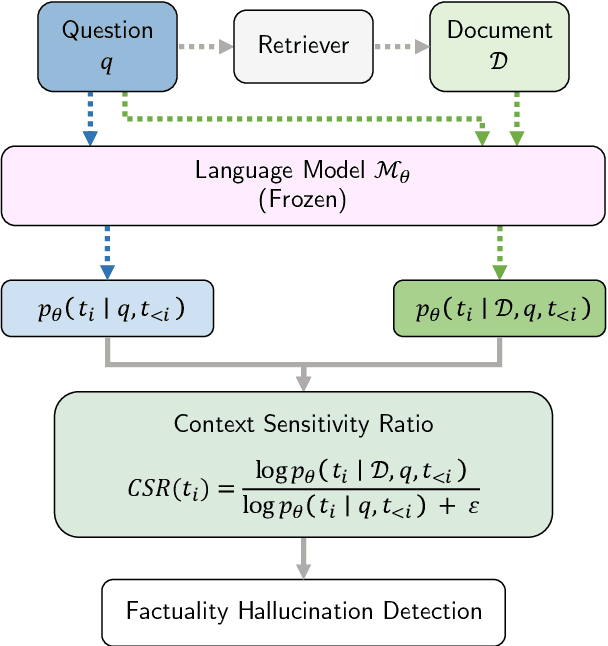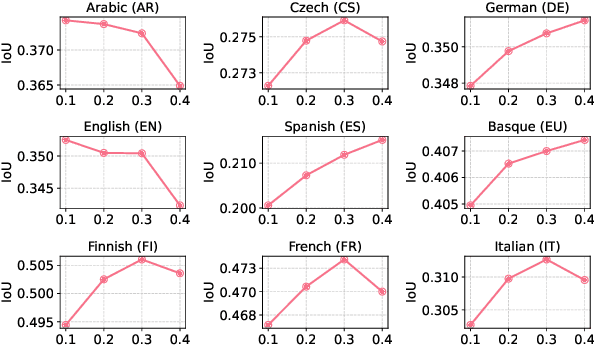Hwanjo Yu
MAP4TS: A Multi-Aspect Prompting Framework for Time-Series Forecasting with Large Language Models
Oct 27, 2025Abstract:Recent advances have investigated the use of pretrained large language models (LLMs) for time-series forecasting by aligning numerical inputs with LLM embedding spaces. However, existing multimodal approaches often overlook the distinct statistical properties and temporal dependencies that are fundamental to time-series data. To bridge this gap, we propose MAP4TS, a novel Multi-Aspect Prompting Framework that explicitly incorporates classical time-series analysis into the prompt design. Our framework introduces four specialized prompt components: a Global Domain Prompt that conveys dataset-level context, a Local Domain Prompt that encodes recent trends and series-specific behaviors, and a pair of Statistical and Temporal Prompts that embed handcrafted insights derived from autocorrelation (ACF), partial autocorrelation (PACF), and Fourier analysis. Multi-Aspect Prompts are combined with raw time-series embeddings and passed through a cross-modality alignment module to produce unified representations, which are then processed by an LLM and projected for final forecasting. Extensive experiments across eight diverse datasets show that MAP4TS consistently outperforms state-of-the-art LLM-based methods. Our ablation studies further reveal that prompt-aware designs significantly enhance performance stability and that GPT-2 backbones, when paired with structured prompts, outperform larger models like LLaMA in long-term forecasting tasks.
STEPER: Step-wise Knowledge Distillation for Enhancing Reasoning Ability in Multi-Step Retrieval-Augmented Language Models
Oct 09, 2025Abstract:Answering complex real-world questions requires step-by-step retrieval and integration of relevant information to generate well-grounded responses. However, existing knowledge distillation methods overlook the need for different reasoning abilities at different steps, hindering transfer in multi-step retrieval-augmented frameworks. To address this, we propose Stepwise Knowledge Distillation for Enhancing Reasoning Ability in Multi-Step Retrieval-Augmented Language Models (StepER). StepER employs step-wise supervision to align with evolving information and reasoning demands across stages. Additionally, it incorporates difficulty-aware training to progressively optimize learning by prioritizing suitable steps. Our method is adaptable to various multi-step retrieval-augmented language models, including those that use retrieval queries for reasoning paths or decomposed questions. Extensive experiments show that StepER outperforms prior methods on multi-hop QA benchmarks, with an 8B model achieving performance comparable to a 70B teacher model.
Topic Coverage-based Demonstration Retrieval for In-Context Learning
Sep 15, 2025Abstract:The effectiveness of in-context learning relies heavily on selecting demonstrations that provide all the necessary information for a given test input. To achieve this, it is crucial to identify and cover fine-grained knowledge requirements. However, prior methods often retrieve demonstrations based solely on embedding similarity or generation probability, resulting in irrelevant or redundant examples. In this paper, we propose TopicK, a topic coverage-based retrieval framework that selects demonstrations to comprehensively cover topic-level knowledge relevant to both the test input and the model. Specifically, TopicK estimates the topics required by the input and assesses the model's knowledge on those topics. TopicK then iteratively selects demonstrations that introduce previously uncovered required topics, in which the model exhibits low topical knowledge. We validate the effectiveness of TopicK through extensive experiments across various datasets and both open- and closed-source LLMs. Our source code is available at https://github.com/WonbinKweon/TopicK_EMNLP2025.
Federated Continual Recommendation
Aug 06, 2025Abstract:The increasing emphasis on privacy in recommendation systems has led to the adoption of Federated Learning (FL) as a privacy-preserving solution, enabling collaborative training without sharing user data. While Federated Recommendation (FedRec) effectively protects privacy, existing methods struggle with non-stationary data streams, failing to maintain consistent recommendation quality over time. On the other hand, Continual Learning Recommendation (CLRec) methods address evolving user preferences but typically assume centralized data access, making them incompatible with FL constraints. To bridge this gap, we introduce Federated Continual Recommendation (FCRec), a novel task that integrates FedRec and CLRec, requiring models to learn from streaming data while preserving privacy. As a solution, we propose F3CRec, a framework designed to balance knowledge retention and adaptation under the strict constraints of FCRec. F3CRec introduces two key components: Adaptive Replay Memory on the client side, which selectively retains past preferences based on user-specific shifts, and Item-wise Temporal Mean on the server side, which integrates new knowledge while preserving prior information. Extensive experiments demonstrate that F3CRec outperforms existing approaches in maintaining recommendation quality over time in a federated environment.
From What to Respond to When to Respond: Timely Response Generation for Open-domain Dialogue Agents
Jun 17, 2025Abstract:While research on dialogue response generation has primarily focused on generating coherent responses conditioning on textual context, the critical question of when to respond grounded on the temporal context remains underexplored. To bridge this gap, we propose a novel task called timely dialogue response generation and introduce the TimelyChat benchmark, which evaluates the capabilities of language models to predict appropriate time intervals and generate time-conditioned responses. Additionally, we construct a large-scale training dataset by leveraging unlabeled event knowledge from a temporal commonsense knowledge graph and employing a large language model (LLM) to synthesize 55K event-driven dialogues. We then train Timer, a dialogue agent designed to proactively predict time intervals and generate timely responses that align with those intervals. Experimental results show that Timer outperforms prompting-based LLMs and other fine-tuned baselines in both turn-level and dialogue-level evaluations. We publicly release our data, model, and code.
Delving into Instance-Dependent Label Noise in Graph Data: A Comprehensive Study and Benchmark
Jun 14, 2025Abstract:Graph Neural Networks (GNNs) have achieved state-of-the-art performance in node classification tasks but struggle with label noise in real-world data. Existing studies on graph learning with label noise commonly rely on class-dependent label noise, overlooking the complexities of instance-dependent noise and falling short of capturing real-world corruption patterns. We introduce BeGIN (Benchmarking for Graphs with Instance-dependent Noise), a new benchmark that provides realistic graph datasets with various noise types and comprehensively evaluates noise-handling strategies across GNN architectures, noisy label detection, and noise-robust learning. To simulate instance-dependent corruptions, BeGIN introduces algorithmic methods and LLM-based simulations. Our experiments reveal the challenges of instance-dependent noise, particularly LLM-based corruption, and underscore the importance of node-specific parameterization to enhance GNN robustness. By comprehensively evaluating noise-handling strategies, BeGIN provides insights into their effectiveness, efficiency, and key performance factors. We expect that BeGIN will serve as a valuable resource for advancing research on label noise in graphs and fostering the development of robust GNN training methods. The code is available at https://github.com/kimsu55/BeGIN.
* 17 pages
On the Effectiveness of Integration Methods for Multimodal Dialogue Response Retrieval
Jun 13, 2025Abstract:Multimodal chatbots have become one of the major topics for dialogue systems in both research community and industry. Recently, researchers have shed light on the multimodality of responses as well as dialogue contexts. This work explores how a dialogue system can output responses in various modalities such as text and image. To this end, we first formulate a multimodal dialogue response retrieval task for retrieval-based systems as the combination of three subtasks. We then propose three integration methods based on a two-step approach and an end-to-end approach, and compare the merits and demerits of each method. Experimental results on two datasets demonstrate that the end-to-end approach achieves comparable performance without an intermediate step in the two-step approach. In addition, a parameter sharing strategy not only reduces the number of parameters but also boosts performance by transferring knowledge across the subtasks and the modalities.
Leveraging Historical and Current Interests for Continual Sequential Recommendation
Jun 09, 2025Abstract:Sequential recommendation models based on the Transformer architecture show superior performance in harnessing long-range dependencies within user behavior via self-attention. However, naively updating them on continuously arriving non-stationary data streams incurs prohibitive computation costs or leads to catastrophic forgetting. To address this, we propose Continual Sequential Transformer for Recommendation (CSTRec) that effectively leverages well-preserved historical user interests while capturing current interests. At its core is Continual Sequential Attention (CSA), a linear attention mechanism that retains past knowledge without direct access to old data. CSA integrates two key components: (1) Cauchy-Schwarz Normalization that stabilizes training under uneven interaction frequencies, and (2) Collaborative Interest Enrichment that mitigates forgetting through shared, learnable interest pools. We further introduce a technique that facilitates learning for cold-start users by transferring historical knowledge from behaviorally similar existing users. Extensive experiments on three real-world datasets indicate that CSTRec outperforms state-of-the-art baselines in both knowledge retention and acquisition.
Are Vision-Language Models Safe in the Wild? A Meme-Based Benchmark Study
May 21, 2025Abstract:Rapid deployment of vision-language models (VLMs) magnifies safety risks, yet most evaluations rely on artificial images. This study asks: How safe are current VLMs when confronted with meme images that ordinary users share? To investigate this question, we introduce MemeSafetyBench, a 50,430-instance benchmark pairing real meme images with both harmful and benign instructions. Using a comprehensive safety taxonomy and LLM-based instruction generation, we assess multiple VLMs across single and multi-turn interactions. We investigate how real-world memes influence harmful outputs, the mitigating effects of conversational context, and the relationship between model scale and safety metrics. Our findings demonstrate that VLMs show greater vulnerability to meme-based harmful prompts than to synthetic or typographic images. Memes significantly increase harmful responses and decrease refusals compared to text-only inputs. Though multi-turn interactions provide partial mitigation, elevated vulnerability persists. These results highlight the need for ecologically valid evaluations and stronger safety mechanisms.
REFIND: Retrieval-Augmented Factuality Hallucination Detection in Large Language Models
Feb 19, 2025



Abstract:Hallucinations in large language model (LLM) outputs severely limit their reliability in knowledge-intensive tasks such as question answering. To address this challenge, we introduce REFIND (Retrieval-augmented Factuality hallucINation Detection), a novel framework that detects hallucinated spans within LLM outputs by directly leveraging retrieved documents. As part of the REFIND, we propose the Context Sensitivity Ratio (CSR), a novel metric that quantifies the sensitivity of LLM outputs to retrieved evidence. This innovative approach enables REFIND to efficiently and accurately detect hallucinations, setting it apart from existing methods. In the evaluation, REFIND demonstrated robustness across nine languages, including low-resource settings, and significantly outperformed baseline models, achieving superior IoU scores in identifying hallucinated spans. This work highlights the effectiveness of quantifying context sensitivity for hallucination detection, thereby paving the way for more reliable and trustworthy LLM applications across diverse languages.
 Add to Chrome
Add to Chrome Add to Firefox
Add to Firefox Add to Edge
Add to Edge